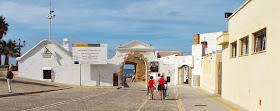The way things are going at the moment with regard to my work on the 'new' version of THE PORTABLE WARGAME rules, this quote from Winston Churchill seems to make a lot of sense.
I began work on a 'new' version of the rules just after I returned from our recent cruise, but for some reason I seem to keep getting to a certain point in the drafting process ... and then finding that what I have written is over-complex and no longer simple. After three attempts to get it right, I decided to take a step back and to look at the original first draft of the rules.
These were heavily based on Joseph Morschauser's 'Frontier', 'Modern', and 'Musket' rules, and re-reading them has helped me to 'look farther back' and – as a result – to 'see farther forward'. I am going to take a break from my efforts to write a 'new' version of the rules for a couple of days, but I am sure that when I return to this task, I will find it a much easier to complete.
I began work on a 'new' version of the rules just after I returned from our recent cruise, but for some reason I seem to keep getting to a certain point in the drafting process ... and then finding that what I have written is over-complex and no longer simple. After three attempts to get it right, I decided to take a step back and to look at the original first draft of the rules.
These were heavily based on Joseph Morschauser's 'Frontier', 'Modern', and 'Musket' rules, and re-reading them has helped me to 'look farther back' and – as a result – to 'see farther forward'. I am going to take a break from my efforts to write a 'new' version of the rules for a couple of days, but I am sure that when I return to this task, I will find it a much easier to complete.


















































